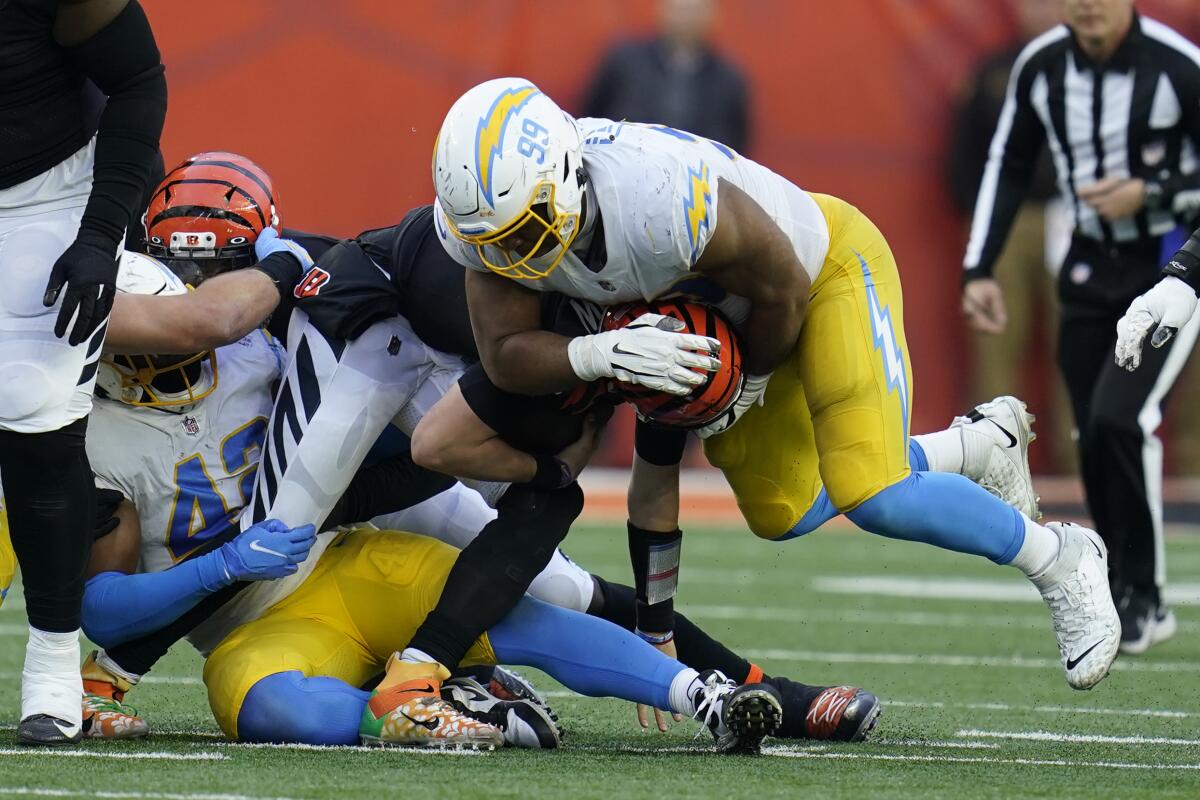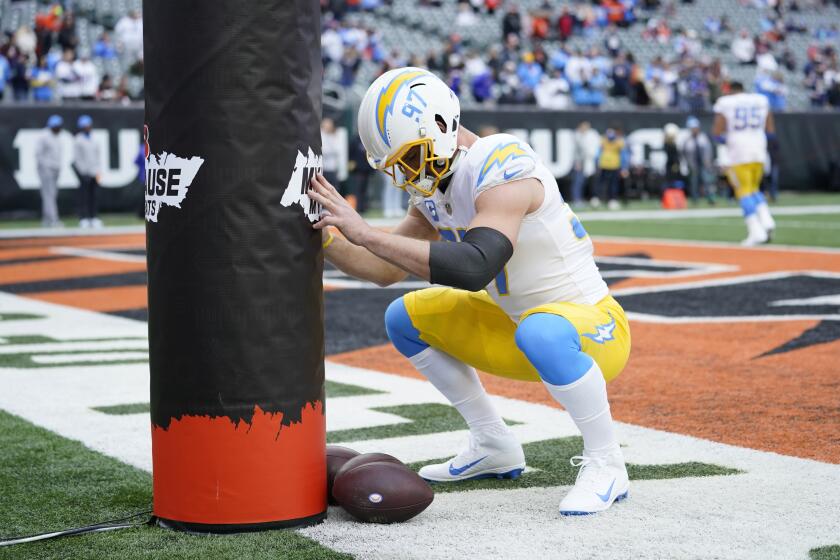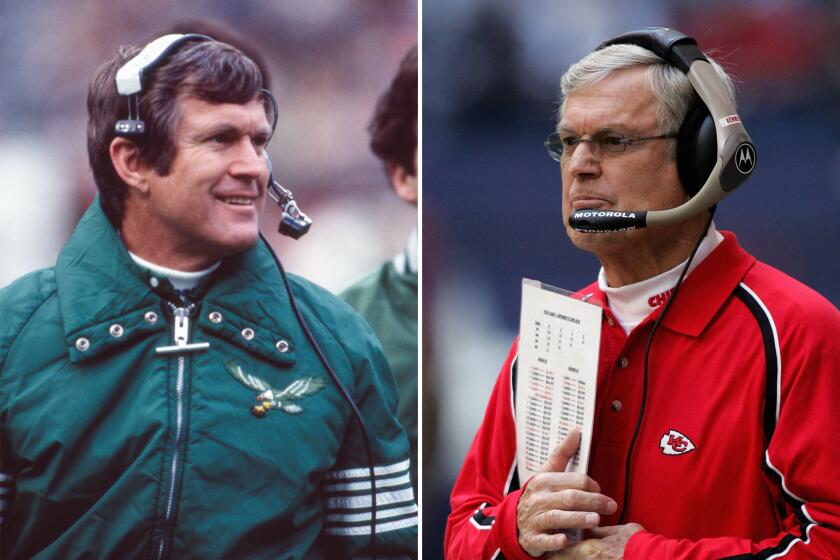Chargers’ pass rush hits new heights in victory over Bengals

- Share via
They had a season high in pressures and a sack total not reached since 2016, when the team was still in San Diego.
The Chargers finally unleashed some sustained heat on the opposing quarterback Sunday in their 41-22 victory in Cincinnati.
Coach Brandon Staley explained the keys were getting out to a 24-0 lead and being stingier on first and second downs.
“Now, you get to play the game on your terms,” he said Monday. “That’s probably one of the few games that we’ve really been able to do that. You can see the effectiveness of those [rush] packages.”
Chargers wide receiver Keenan Allen, who scored two touchdowns in a win over the Cincinnati Bengals on Sunday, was placed on the COVID-19 list.
The Chargers pressured Joe Burrow 27 times and finished with six sacks, and that was with star edge rusher Joey Bosa playing only nine snaps before leaving the game to be evaluated for a head injury.
Bosa was cleared medically, but the Chargers opted to keep him out as a precaution. In the three-time Pro Bowl player’s absence, Staley turned to the blitz, something not seen from this team in recent years.
Under Gus Bradley, their previous defensive coordinator, the Chargers rarely blitzed. They are tied for 14th in blitzing this season, according to Pro Football Reference, and used their extra rushers effectively Sunday.
Safeties Derwin James and Nasir Adderley split a sack and linebacker Drue Tranquill had one on his own, both stops coming on third down as the Chargers put away the Bengals.
“I felt like it gave us an advantage,” Staley said of the blitzing. “It featured some of our premium guys.”
Edge rusher Uchenna Nwosu led the Chargers with two sacks and seven pressures. Defensive tackle Jerry Tillery and edge rusher Kyler Fackrell had four pressures apiece.

Rookie Chris Rumph II had three pressures and his first career sack. The Chargers also scored a defensive touchdown and generated four takeaways, including an interception in the end zone by cornerback Chris Harris Jr.
Cincinnati was missing two of its starting offensive linemen, and the Chargers exploited that fact. Their previous high for pressures in a game came in Week 3, when they had 25 against Kansas City and Patrick Mahomes.
“You have to play team defense in this league in order to be as good as you can be,” Staley said. “You saw all three levels of our defense make plays.”
The Chargers even stopped the run well enough to wiggle out of being the league’s worst against the rush for the season. They finished Week 13 ranked 31st, one spot ahead of Houston.
Joe Mixon, the Bengals’ top rusher, carried 19 times for only 54 yards, an average of 2.8 per attempt. Tillery, Christian Covington, Joe Gazian, Justin Jones and Breiden Fehoko all helped stuff Mixon.
One of the Chargers’ more significant stops came when they prevented Mixon from converting a two-point try that would have tied the score in the third quarter.
What we learned from Chargers’ 41-22 road victory over the Bengals: Joey Bosa was cleared when checked for concussion but kept out as a precaution.
The attempt failed even after the Chargers had been called for too many men on the field, giving Cincinnati the ball at the one-yard line.
“It just shows real toughness,” Staley said. “You saw a lot of people knocking people back, playing with the right technique and playing with a lot of fire. … The feeling of 24-22 versus a tie game was a big, big, big, big, big, big play in the game.”
The Chargers, who have one of the NFL’s worst third-down defenses, allowed the Bengals to convert at a rate of 50% (six of 12).
But they stopped Cincinnati on four of its final five third downs, including all three after the score tightened to 24-22.
Still, Staley wasn’t pleased that the Bengals opened the game by converting five of their first seven third downs, something he pinned on poor performances in the secondary.
“We need to make sure that we play with the proper technique and leverage on third down because we’ll play a lot less plays if we can execute properly,” he said. “We’ve shown that when we do execute properly our rush will come alive.”
More to Read
Go beyond the scoreboard
Get the latest on L.A.'s teams in the daily Sports Report newsletter.
You may occasionally receive promotional content from the Los Angeles Times.









